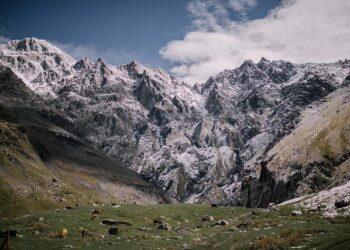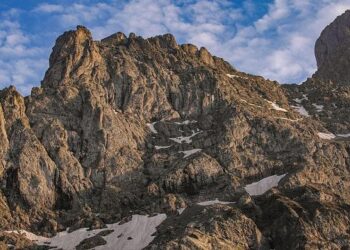Once synonymous with conflict and fear, Georgia’s Pankisi Valley has undergone a remarkable transformation, emerging from the shadows of its troubled past to become a destination of growing interest for tourists and adventurers alike. This article explores how the remote region, once stigmatized by reports of terrorism and instability, has rewritten its narrative through resilience, community initiatives, and strategic development. From the challenges of its recent history to the opportunities of a new era, we examine the forces that have reshaped Pankisi Valley into a symbol of renewal and hope.
Pankisi Valley’s Transformation from Conflict Zone to Cultural Destination
Once notorious as a hotbed of conflict and unrest, the Pankisi Valley has undergone a dramatic metamorphosis. Nestled in the northeastern region of Georgia, the valley was long overshadowed by tales of militancy and instability. Today, however, local communities have taken bold steps to reclaim their heritage and reshape the narrative. Through strategic initiatives focusing on cultural preservation, eco-tourism, and community engagement, Pankisi is emerging as a beacon of hope and a new hub for adventurous travelers seeking authentic experiences.
Key factors driving this transformation include:
- Restoration of historical sites: Ancient towers and unique Kist architecture are being preserved and opened to tourists.
- Promotion of local traditions: Festivals celebrating music, dance, and crafts invite visitors to immerse themselves in the valley’s rich cultural fabric.
- Eco-tourism development: Hiking trails and nature tours offer a safe gateway to the stunning Caucasus landscapes.
| Year | Visitor Numbers | Main Attractions |
|---|---|---|
| 2015 | 2,000 | Local family homestays |
| 2019 | 8,500 | Heritage trails & festivals |
| 2023 | 15,000+ | Eco-tourism and cultural tours |
Community-Led Initiatives Fuel Sustainable Tourism Growth in Georgia
Over the past decade, locals in Georgia’s Pankisi Valley have transformed their community from a region once stigmatized by conflict into a vibrant hub for sustainable tourism. Driving this shift are grassroots organizations, passionate about preserving the area’s rich cultural heritage while promoting eco-friendly travel. By engaging residents directly in tourism development, these initiatives have empowered the community economically and socially, turning traditional crafts, local cuisine, and nature trails into authentic experiences that attract global visitors.
Key factors behind this success story include:
- Community-led planning: Residents prioritize their needs and environmental concerns, ensuring long-term benefits without compromising local resources.
- Training programs: Workshops teach sustainable hospitality skills, enabling locals to manage guesthouses and guide tours effectively.
- Collaborations: Partnerships with environmental NGOs and the government help secure funding and expand marketing reach.
| Initiative | Impact | Year Launched |
|---|---|---|
| Eco-Tour Guide Training | 50+ certified guides | 2017 |
| Craft Revival Project | Boosted local handicraft sales by 70% | 2018 |
| Community Guesthouses | Increased lodging options by 40% | 2019 |
Recommendations for Supporting Local Development and Preserving Heritage in Pankisi Valley
Enhancing Pankisi Valley’s economic resilience requires a community-driven approach that carefully aligns development efforts with the preservation of its unique cultural identity. Investing in eco-tourism infrastructure-such as sustainable guesthouses and guided trekking routes-can create new job opportunities while minimizing environmental impact. Local artisans should be supported through cooperative markets and digital platforms that amplify the reach of their traditional crafts. Furthermore, educational programs focusing on heritage conservation will empower younger generations to become custodians of their history, fostering pride and continuity.
Collaboration between government agencies, international NGOs, and local stakeholders can strategically channel resources into projects that balance modernization and preservation. For instance, introducing cultural festivals and storytelling events offers a platform to celebrate Pankisi’s rich legacy while attracting culturally curious visitors. Below is a comparative overview of key initiatives that could stimulate sustainable growth and heritage protection:
| Initiative | Purpose | Expected Benefit |
|---|---|---|
| Eco-tourism Development | Build infrastructure with minimal environmental impact | New jobs & natural preservation |
| Artisan Cooperatives | Promote traditional crafts through collective marketing | Economic empowerment & cultural pride |
| Heritage Education | Train youth in cultural conservation skills | Intergenerational knowledge transfer |
| Cultural Festivals | Showcase history and traditions to visitors | Tourism boost & global awareness |
- Prioritize community participation in all stages of development planning to ensure authenticity and local buy-in.
- Leverage digital storytelling and social media to reshuffle Pankisi’s narrative from conflict to culture and adventure.
- Protect natural landscapes through regulated tourism activities and environmental education campaigns.
- Encourage partnerships between local businesses and international operators to expand market access sustainably.
Concluding Remarks
The transformation of Georgia’s Pankisi Valley from a region once associated with conflict and fear to a budding hub of tourism underscores the community’s resilience and determination to redefine its future. As visitors increasingly discover the area’s rich culture, scenic landscapes, and warm hospitality, Pankisi Valley stands as a testament to how regions can overcome challenging pasts through sustained efforts and renewed purpose. The valley’s evolving story continues to attract attention, offering hope that peace and progress can prevail even in the most troubled places.
















